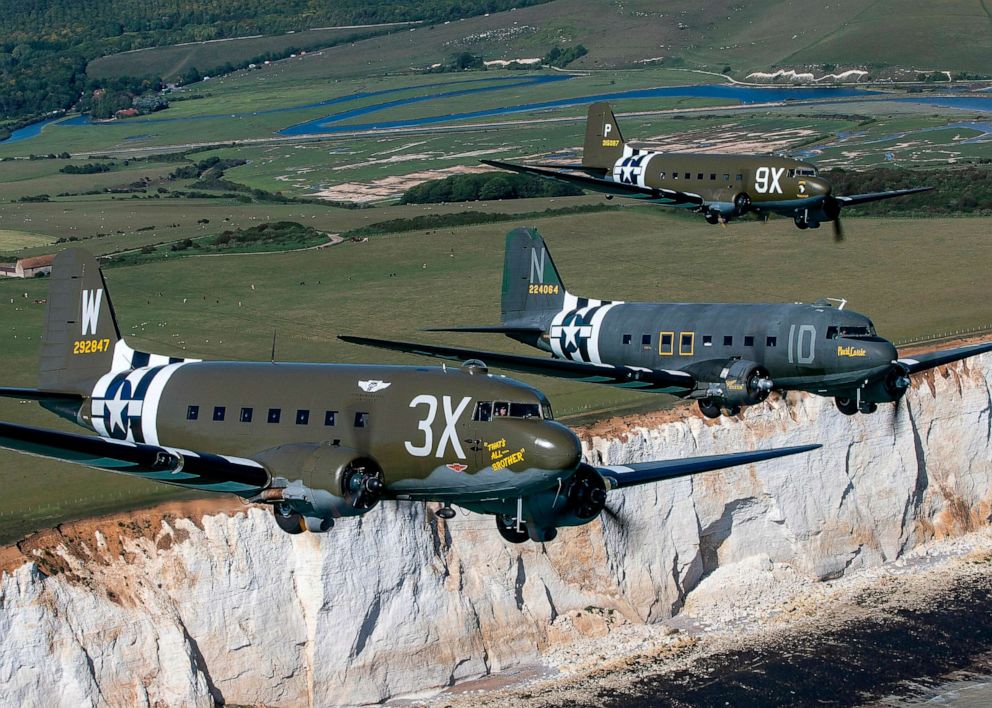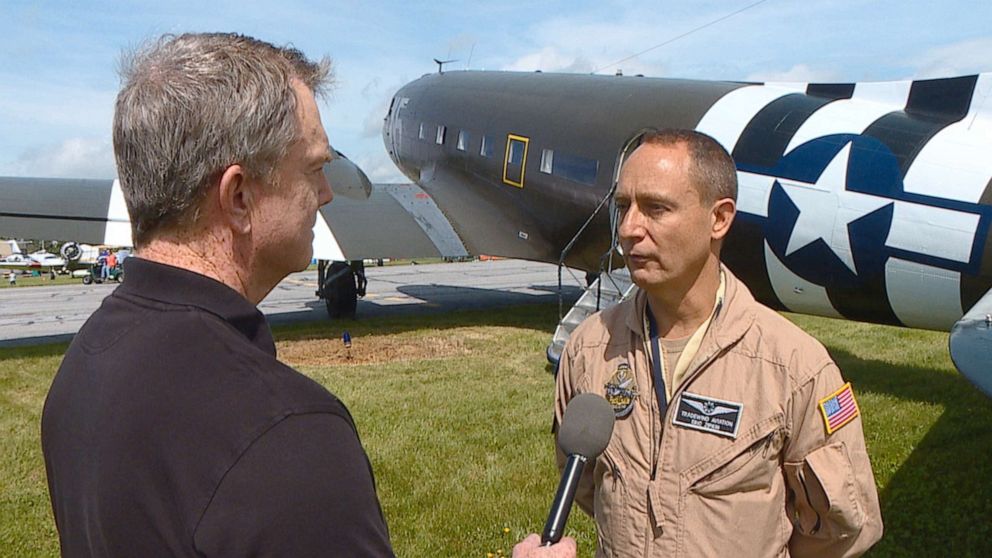D-Day squadron: Historic airplanes journey from US to Normandy for 75th anniversary
The skies will be filled with meticulously restored Douglas DC-3/C-47 Dakotas.
Hundreds of spectators gathered in Normandy, France, on Wednesday to watch about 200 paratroopers participating in the Daks Over Normandy event, organized to reenact the jump made by Allied troops in the aerial assault that preceded the seaborne invasion on D-Day, June 6, 1944.
And one of the more stunning sites was 97-year-old U.S. World War II D-Day veteran paratrooper, Tom Rice, who parachuted in a tandem jump into roughly the same area he landed in 75 years ago.
Rice was with the 101st Airborne Division in 1944, and cannot be sure of the exact area he jumped into. "It was morning here - dark there (then) - and that was hard going," Rice said.
"The D-Day jump I landed standing up for the most part and then went down to my knees and bounced a couple times because I had so much equipment and I had a difficult time getting out of that equipment," he said.
Rice spent six months with a trainer in preparation for Wednesday’s jump and describes having a completely different experience.
"Great, great! Beautiful drive, beautiful jump, beautiful flight, everything was perfect!" he said.

One of the most significant dates in modern history -- June 6, 1944 -- marks when 160,000 Allied troops stormed the heavily fortified, 50-mile coastline of Normandy, France, in an effort to liberate Western Europe during World War II.
The beach landings were preceded by an aerial assault, in which 13,000 American paratroopers from the 82nd and 101st Airborne Divisions were dropped past enemy lines.
To commemorate the 75th anniversary on Wednesday, the skies over Normandy were filled with meticulously restored Douglas DC-3/C-47 Dakotas -- the same aircraft which carried the men across the English Channel and into battle. This time, hundreds of paratroops outfitted in replicas of Allied uniforms and using WWII military-style parachutes reenacted the drop.
The Daks Over Normandy event was organized to honor the service and sacrifice of the troops who "risked life and limb to bring about the beginning of the end" of the War in Europe.
To make this historic tribute possible, the owners and operators of these WWII-era aircraft were flying to France from the U.S., Canada, all over Europe and from as far as Australia.

On May 19, the American contingent known as the "D-Day Squadron" began its journey from Maine to Goose Bay, Canada.
"These are the aircraft. Not aircraft like this -- these are the aircraft that carried these paratroopers and flew during the war," said Eric Zipkin, a pilot and coordinator for the U.S. effort.
"It's extraordinary to think that 19-year-olds were doing this. And it was just what they did. It's a fitting remembrance to them," he added.
From Canada, the 15 American WWII-era aircraft, began the long trip to Europe. They traveled from Narsarsuaq, Greenland, to Reykjavik, Iceland, and arrived in Scotland on May 23.
The U.S. contingent arrived in Duxford, U.K,. on on May 29. From there, they flew in formation across the English Channel to reenact the aerial assault in Normandy on Wednesday and will repeat the reenactment on Thursday.
Before leaving the U.S., Zipkin told ABC News that he would be thinking of how grateful he is to the Allied forces that fought on that day in 1944.
"Thank you to all that have made this possible," he said. "Thank you to them."




